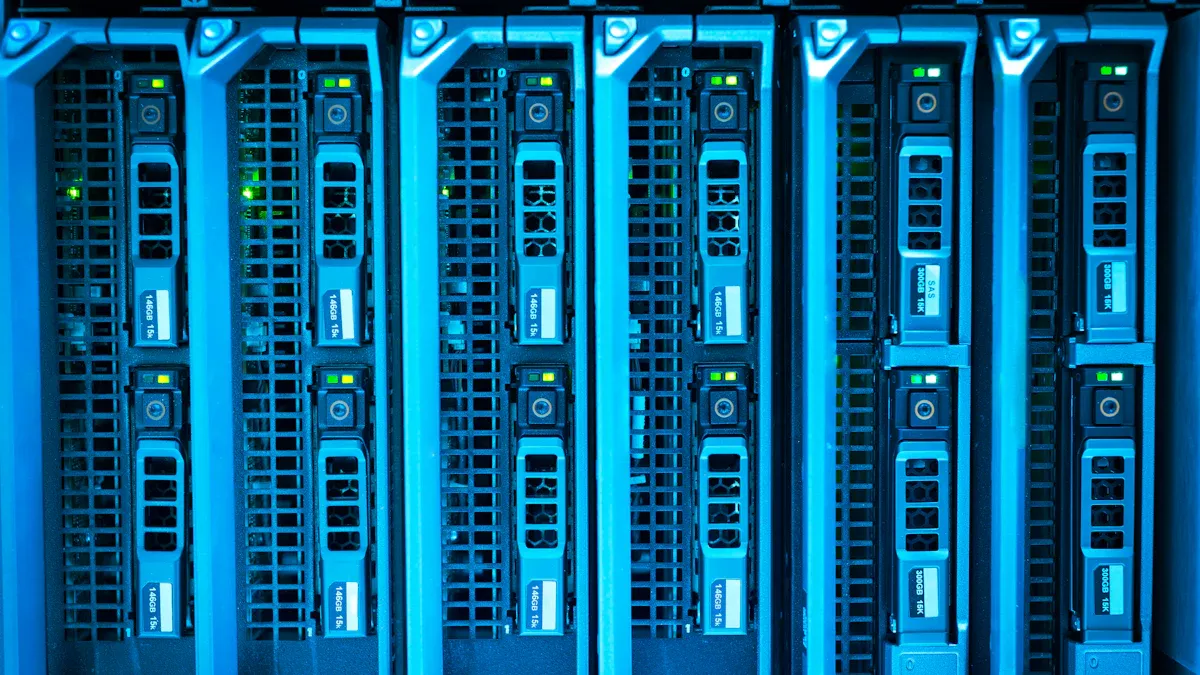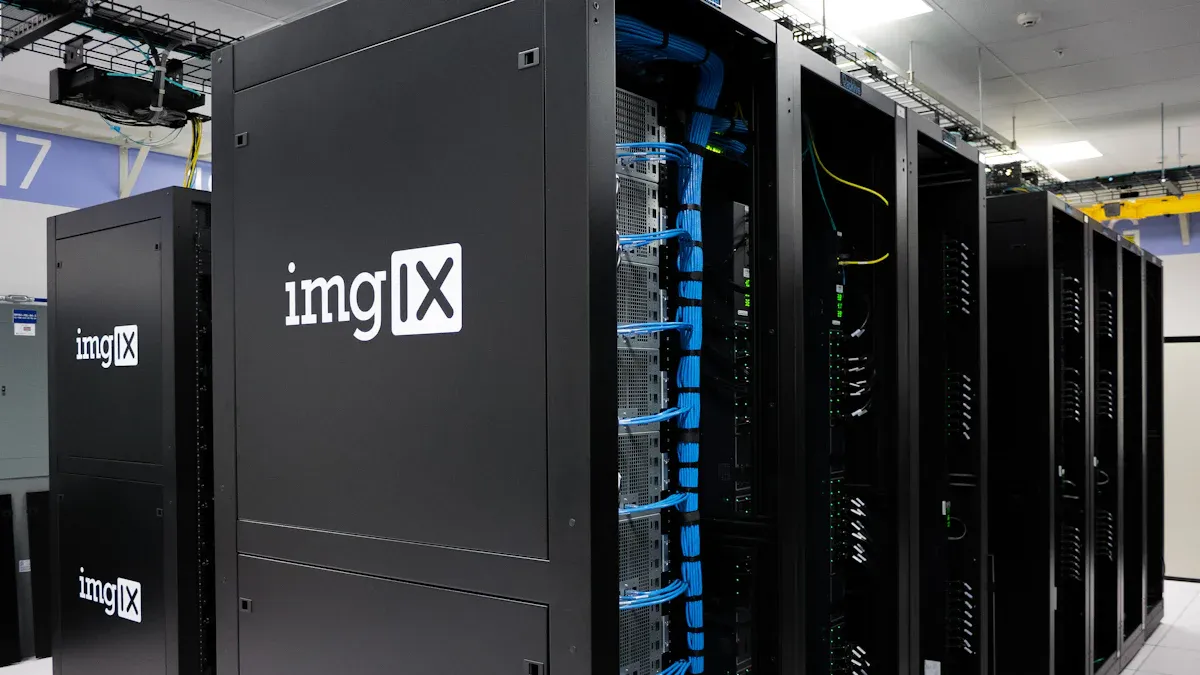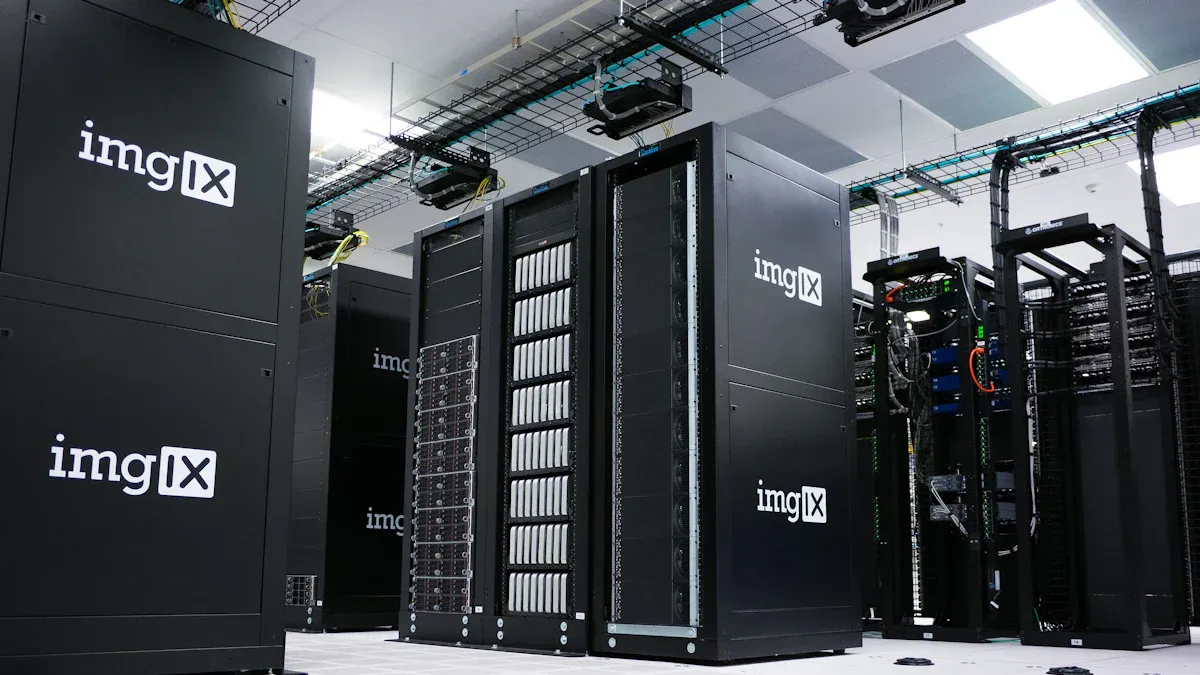
Smart PDUs transform power management in Middle East IT environments by supporting real-time monitoring, remote access, and advanced control. These solutions address operational efficiency, reliability, and security.
Industry reports highlight benefits such as enhanced uptime, predictive maintenance, and reduced downtime risk.
| Key Features | Impact on IT Environments |
|---|---|
| Real-time monitoring | Improved uptime, quick response |
| Predictive analytics | Minimized downtime, proactive care |
| Secure control | Enhanced safety, compliance |
Key Takeaways
- Smart PDUs improve power management by enabling real-time monitoring and remote control, which helps reduce downtime and boost operational efficiency.
- These devices support energy savings by tracking consumption and integrating with renewable sources, helping organizations cut costs and meet sustainability goals.
- Advanced security features in smart PDUs protect critical systems from unauthorized access and help organizations comply with important regulations.
Overcoming Regional IT Challenges with Smart PDU Solutions

Managing High Temperatures in Data Centers
Data centers in the Middle East often face extreme heat, which can threaten equipment reliability and increase cooling costs. Smart PDUs play a crucial role in addressing these challenges. They enable real-time monitoring of power loads and environmental conditions, allowing IT teams to identify hotspots and optimize cooling strategies. By providing granular data on energy consumption and temperature, smart PDUs help operators adjust airflow and cooling systems more efficiently. This proactive approach reduces the risk of overheating and extends the lifespan of critical hardware. Market research shows that the demand for intelligent PDUs continues to rise in high power density environments, especially as cloud computing expands across the region. These solutions support rapid scaling and efficient capacity planning, even when skilled labor is limited or site footprints are constrained.
Meeting Energy Efficiency and Sustainability Goals
Sustainability has become a top priority for IT leaders in the Middle East. Smart PDUs contribute significantly to energy efficiency initiatives by offering advanced features such as real-time energy monitoring, energy optimization, and predictive maintenance powered by IoT and AI. These capabilities allow organizations to track and reduce energy waste, which can lower operational costs by up to 30%. Integration with renewable energy sources, such as solar and wind, further boosts overall efficiency by approximately 20%. The UAE and other countries in the region have invested heavily in smart technologies, positioning themselves as leaders in advanced power management. Smart PDUs also facilitate seamless integration of renewables into existing infrastructures, improving load balancing and energy resilience. Regulatory trends continue to push for stricter energy standards, making the adoption of smart PDUs a strategic move for organizations aiming to meet both local and global sustainability targets.
- Smart PDUs can reduce energy waste by up to 30%.
- Integration with renewables increases efficiency by about 20%.
- Real-time monitoring and predictive maintenance support sustainability.
- Regulatory standards drive adoption of advanced power management.
Enhancing Security and Compliance in Power Distribution
Security and compliance remain critical concerns for data centers and IT environments. Smart PDUs address these needs by providing advanced authentication and access controls, which restrict unauthorized access to power outlets. Detailed audit trails support accountability and help organizations meet regulatory requirements. These features prevent accidental or malicious disruptions to critical systems, enhancing overall data center security. Monitored PDUs also support compliance with healthcare regulations, such as HIPAA and HITECH, by ensuring uninterrupted power supply to essential IT systems. Real-time monitoring, alerting, and remote management help maintain system reliability and reduce downtime, which are essential for regulatory adherence. Detailed reports generated by these devices can be used during audits to demonstrate compliance. While specific compliance audits or formal security benchmarks may not always be cited, the functional capabilities of smart PDUs align with regulatory requirements and help mitigate risks related to power disruptions and data security breaches.
- Advanced authentication and access control restrict unauthorized access.
- Audit trails and reporting support regulatory compliance.
- Real-time monitoring and alerting maintain system reliability.
- Smart PDUs align with global and regional security standards.
Key PDU Features for Streamlined Power Management

Real-Time Monitoring and Remote Control
Smart PDUs deliver real-time monitoring and remote control, transforming how IT teams manage power distribution. Operators gain instant visibility into voltage, current, energy consumption, temperature, and humidity. This data enables early detection of inefficiencies and potential issues. Market surveys show that intelligent PDUs are increasingly deployed for their ability to provide operational efficiency, energy cost reduction, and proactive fault detection. For example, a data center in Asia achieved a 15% reduction in energy consumption by leveraging real-time monitoring and load balancing. Remote management features allow teams to reboot equipment, balance loads, and respond to anomalies without being on-site. These capabilities support faster decision-making and predictive maintenance, reducing downtime by up to 25%.
Tip: Remote management reduces the need for on-site interventions, saving time and resources.
Advanced Security and Access Controls
Security remains a top priority in modern IT environments. Smart PDUs incorporate advanced authentication, access controls, and audit trails. Data centers often require compliance with standards such as ISO/IEC 27001 and SOC 2. These certifications validate the effectiveness of security features, including physical controls like biometric access and locked cabinets, as well as cybersecurity practices such as credential hardening. Regular audits ensure that these controls protect critical infrastructure. Certified smart PDUs help organizations meet regulatory requirements and maintain trust in their power management systems.
Integration and Scalability for Diverse IT Environments
Adaptability defines the modern PDU. Modular and scalable designs allow for expansion and reconfiguration without disrupting operations. Integration with DCIM and power management systems provides centralized control and real-time monitoring. Organizations benefit from features such as outlet-level control, scheduling, and built-in circuit breakers, which protect equipment and optimize energy use. Vendor-agnostic management solutions unify control across multi-vendor environments, reducing complexity and operational costs. Case studies highlight how telecom providers and global firms use smart PDUs to improve energy management and reduce downtime in both data centers and edge sites.
- Modular designs support seamless expansion.
- Centralized control simplifies operations.
- Environmental sensor integration reduces cooling costs and prevents outages.
Smart PDUs deliver efficient and secure power distribution for Middle East IT environments. Their advanced features support operational growth and long-term energy savings. Organizations that invest in these solutions position themselves for continued success during regional digital transformation.
FAQ
What is a smart PDU and how does it differ from a basic PDU?
A smart PDU offers real-time monitoring, remote management, and advanced control. A basic PDU only distributes power without intelligent features.
Can smart PDUs help reduce energy costs in Middle East data centers?
Smart PDUs track energy use and identify inefficiencies. Operators use this data to optimize power consumption and lower operational expenses.
Are smart PDUs compatible with existing IT infrastructure?
Most smart PDUs support integration with standard racks and management systems. They adapt to diverse environments and scale with growing infrastructure needs.
Post time: Jul-15-2025





